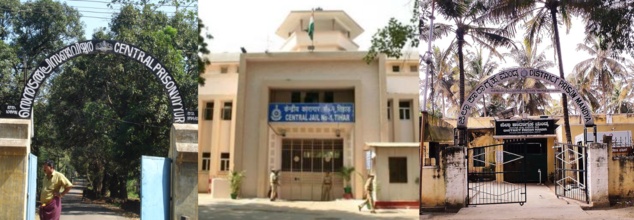
Credits: Canva
More Americans Than Ever Are Depressed With Most Not Receiving Treatment, CDC Reveals
A shocking new CDC report shows that an unprecedented number of Americans are dealing with depression, yet most aren't receiving the care they require. From drowning teenagers to burnout adults, this epidemic mental health crisis runs deeper and more widespread than many think but what's behind this epidemic exactly? And why is treatment still beyond reach for so many? Depression has hit record high levels — reaching more than 1 in 8 Americans 12 years of age and older, says new information recently made public. The upward swing is alarming, yet most of those living with depression go untreated, which indicates not only a crisis of health but also a profound disconnect in access, awareness, and acceptance of mental health treatment.
Between 2015 and 2023, the percentage of Americans who reported depressive symptoms has almost doubled — increasing from 7.3% to more than 13%, the National Health and Nutrition Examination Survey (NHANES) reports. This increase is especially steep among teens and women, two cohorts that are facing intense psychological pressure in the aftermath of the pandemic.
Teenagers aged 12 to 19 reported the highest levels of depression, with 19% reporting symptoms in the last two weeks—a dramatic number that underscores the teen mental health crisis. Women are also disproportionately impacted, with 16% reporting depression versus 10% of men, highlighting a major gender disparity in mental health outcomes. By comparison, people over 60 years reported having the lowest level of depression at a mere 9%, raising the potential linkage between life stability, age, or accessibility of coping tools and younger cohorts who may be bereft thereof.
Teenage girls are particularly at risk — over 1 in 4 teen girls suffer from clinical depression, the largest affected group. At the same time, the CDC's Youth Risk Behavior Survey gives a grim picture, 53% of high school girls said they often felt sad or hopeless — almost twice as many boys and 14 points more than a decade ago.
Why Most People Aren't Getting Treated?
And perhaps the most unsettling part of the CDC report is the huge treatment gap. Although 88% of those surveyed did admit that depression affected work, school, and social life — just around 40% were given any kind of counseling or therapy.
Women are more likely than men to go to therapy (43% vs 33%), and they're over twice as likely to be on antidepressant medication. Yet most adolescents — while having higher levels of depression — are less likely to be on medication, creating an imbalance between need and treatment.
Socioeconomic status also comes into play: individuals with higher incomes had lower rates of depression, and most likely had greater access to mental health care.
How COVID-19 Changed Everything?
The surge in depression tracks perfectly with the social and psychological impact of the COVID-19 pandemic. Disruption of routine, extended isolation, loss of loved ones, economic uncertainty, and uncertainty about the future converged into a perfect storm of mental tension.
Additionally, shifts in how the NHANES survey was conducted during the pandemic could have impacted reporting, but experts say the increase in symptoms is too uniform across demographics to be an artifact of statistics.
What Untreated Depression Does to the Body?
Clinical depression isn’t just an emotional struggle; it fundamentally alters brain function and structure. Functional imaging studies reveal abnormalities in the ventral limbic system — a brain region responsible for regulating emotions and bodily functions.
Untreated depression has been found to cause shrinkage in the hippocampus, thalamus, amygdala, and prefrontal cortex, all of which are linked to mood and cognitive function. These alterations can exacerbate the severity of the condition over time, and recovery becomes more challenging.
Also, depression left untreated disables neurotransmitter function — possibly derailing communication between areas of the brain. Whether or not this is an effect or cause of the illness is uncertain, but the result is the same: ongoing suffering without adequate medical or therapeutic intervention.
Physical Cost of Ignoring Mental Health
Clinical depression is a physical health hazard as well. Research indicates that individuals with major depression who are recovering from heart attacks or strokes have difficulty in adhering to medical instructions, controlling symptoms, and making treatment choices. These patients are also at increased risk of premature mortality within months of a cardiac condition.
This highlights the need to consider mental health care as part of general health — not a luxury or an add-on.
Selective serotonin reuptake inhibitors (SSRIs) — a widely used group of antidepressants — have been in the public eye recently. US Secretary of Health Robert F. Kennedy Jr. has made false claims that SSRIs are potentially more addictive than heroin, something not backed by existing evidence.
Yet, figures from Truveta, a prominent health analytics company, indicate that trends in antidepressant prescriptions since 2018 have been stable, albeit for a brief surge in the early years of the pandemic. This is contrary to fears of overprescription and may indicate that dependency fears are exaggerated.
The increasing mental health load — particularly among women and adolescents — necessitates immediate policy response. Stepping up access to affordable counselling, increasing school-based mental health clinics, combating stigma in hard-to-reach communities, and an investment in preventative care are necessary measures.

Credits: Wikimedia Commons
Pope Francis Passes At 88, After Battling A Long-Term Health Crisis
Pope Francis, the 266th pontiff of the Roman Catholic Church passed away at the age of 88. The Vatican confirmed his passing on Easter Monday, on April 21, 2025, at Casa Santa Marta, his long-time residence in Vatican City.
Cardinal Kevin Farrell in the statement published by the Vatican on its Telegram channel said: "This morning at 7:35 am (0535 GMT) the Bishop of Rome, Francis, returned to the home of the Father."
His death has come just after a month he was discharged from a hospital stay for double pneumonia. This was the latest in string of health challenges that marked his later years.
The Series of Illness and Recovery
Francis, born Jorge Mario Bergoglio in Buenos Aires, Argentina, had battled numerous health issues over the course of his life. His final hospitalization began on February 14. He was admitted to Rome's Agostino Gemelli Polyclinic Hospital. He was diagnosed with bronchitis and his condition worsened and developed into double pneumonia. After 38 days of treatment, he was finally discharged on March 23. However, he passed away a few weeks later.
On the day he was discharged, Archbishop Edgar Peña Parra, the Vatican's chief of staff, visited the pope multiple times during his hospitalization and expressed optimism about his recover. “The pope will recover. The doctors say that he needs some time, but it’s going well progressively,” Peña Parra said.
He earlier showed signs of improvement, however, even then, his recovery was not without its challenges. The Vatican also confirmed that he required rehabilitation therapy to regain his strength, especially when it came to his ability to speak after weeks of using noninvasive mechanical ventilation.
The Vatican also had periodically released health updates, including an audio message recorded from hi hospital bed on March 6. In it, the Pope also thanked people for their prayers and asked for the Virgin Mary's protection. While he was hospitalized, he marked the 12th anniversary of his papacy on March 13. This went along with a quiet celebration and his staff brought him a birthday cake.
However, Pope Francis had a long history of respiratory problems. At 21, he also had a near-death experience from a severe bout of influenza that resulted in part of one lung being removed. This, for him was a life altering experience, he later described in his book Let Us Dream. "for months, I did not know who I was, and whether I would live or die," he wrote, calling it his first real encounter with pain and loneliness.
In June 2021, he underwent colon surgery, and throughout COVID-19 pandemic, he remained cautious, often curbing public engagements. Despite all such setbacks, he kept a demanding schedule well into his 80s.
A Legacy Of Compassion To Continue
Despite his age and ailments, he remained active until the very end. Just a day before his death, he met with the US Vice President JD Vance. On Easter Sunday, while he was too frail to deliver the tradition "Urbi et Orbi" blessing himself, he made a passionate plea through a delegated speech for "freedom of religion, thought, and expression” and condemned rising anti-Semitism and the crisis in Gaza.
Previous updates on Pope Francis' Health, Find Here.

Credits: Canva
Indian-Origin Doctor Found Guilty in Major US Health Care Fraud Case
A federal jury in Pennsylvania found an Indian-origin physician, Neil Anand, 48, guilty of a series of serious charges, which involve healthcare fraud, illegal drug distribution, and money laundering. The conviction was announced by the US Department of Justice on Wednesday. This marks an essential development in a broader effort to crack down on healthcare-related crimes in the United States.
What Exactly Went Down?
Dr Neil Anand was convicted of orchestrating a complex healthcare fraud conspiracy that amounted to $2.3 million. The scheme was the illegal distribution of controlled substances, including oxycodone.
Oxycodone is a powerful and potentially addictive opioid. The drug has also been at the center of the opioid epidemic that has claimed hundreds of lives across the US over the past two decades.
As per the prosecutors, Anand issued a pre-signed prescription for oxycodone, which was then used by unlicensed medical interns to distribute the drugs to nine of his patients. While this is a small number of recipients, the number of tablets distributed is a big one. A total of 20,850 tablets of oxycodone were issued. This is an alarming figure, given that the drug is known for its high risk for addiction.
The "Goody Bags"
It did not just end to prescribed rug abuse, but to fraudulently billing health insurance companies and government insurance plans for "medically unnecessary" prescription medications.
These medications were distributed as a part of what the prosecutors called "Goody Bags". These were packages of various medicines that patients received through pharmacies owned by Anand himself.
These prescriptions were not only unnecessary but were used as a precondition to access the controlled substances. The insurance providers, unaware of the deception, ended up paying a total of $2.3 million for this unneeded drugs. This combination of drug distribution and fraudulent billing is what led to the serious charges of healthcare fraud.
Anand also tried to hide the proceeds from the fraud and transferred $1.2 million into an account under his father's name. He claimed that it was for the benefit of his minor daughter. Authorities saw this as an attempt to launder the money and keep it away from legal scrutiny.
What Is To Be Followed?
This is not the first time Anand has been charged. He was first charged in 2019, along with four other individuals, three of them were his co-defendants and were also reportedly foreign medical graduates who did not possess licenses to practice medicine in the US. He is now awaiting his sentence which is scheduled for August.
One of the prosecutors in the case is Arun Bodapati, an attorney in the Fraud Section of the US Justice Department’s Criminal Division.
Similar Cases
A similar case of a doctor fraud also happened in India. Though, the case did not involve any money laundering it did put a lot of lives at risk. Here, a man posed as UK doctor in India. The man is Narendra Vikramaditya Yadav. He is accused of posing as a British-trained cardiologist and allegedly performing surgeries that led to the deaths of seven of his patients. The 53-year-old used an alias of Dr N John Camm, had been working at a Mission Hospital in Damoh, Madhya Pradesh.

(L to R) Central Prison in Viyyur, Kerala; Tihar Jail, Delhi; and District prison in Mandya district, Karnataka (Wikimedia Commons and Central Jail, Government of NCT of Delhi)
Recent Report Reveals The Dire Condition Of Indian Jails, Inmates Not Given Proper Healthcare
Jail time, like everyone knows, is of course not an ideal situation to be in. However, like all, even the inmates are to be granted their basic rights, which include medical facilities. However, as per the India Justice Report 2025, inmates in Indian jails cannot avail these facilities. Indian jails are overcrowded, and they lack medical and mental health professionals.
Why Are The Numbers Concerning?
The report reveals that the national average occupancy rate of Indian jails are more than 131%. This means that there is of course overcrowding, leading to hygiene concerns, which eventually puts health at risk. The report also noted that India's prison inmate population will reach 6.8 lakh by 2030, while the capacity is only likely to grow to accommodate 5.15 lakh inmates.
This does not stop at space, but to health staff too. For the entire nation's prisoners, there are only 25 psychologists. The report has clearly noted that mental illness cases have risen from 4,470 in 2012 to 9,084 in 2022. On the contrary, the vacancy for medical officers are at 43%.
The report titled the State of Public Health in India's Prison: India Justice Report 2025 - Finding on Gaps in Staffing & Medical Health Care also threw light on the model prison manual, 2016. This sets the benchmark for the prison to doctor ratio, which must be 300 prisoners to 1 doctor. However, the report notes, the national average "far exceeds that, standing at 775 prisoners per doctor."
There is also non-availability of health data on prisoners who enter jail with a disability or those who acquire disability during their time in the prison.
ALSO READ: BeerBiceps Opens Up On Latent Row's Impact On His Mental Health
How Are Inmates Health Impacted?
As aforementioned, overcrowding is also a source of communicable disease. Between 2012 to 2022, there has been a concerning upward shift in prison population. The report reads: "The total number of people incarcerated has gone up from 3.8 lakh to 5.7 lakh; national occupancy rates have spiked from 112% to 131%. Overall, the 27% increase in prison housing capacity between 2012 and 2022 (from 3.4 lakh to 4.3 lakh) has not kept pace with need. Levels of overcrowding have also escalated. For instance, in 2012, Maharashtra averaged a 99% occupancy rate but in 2022, this had increased to 161%,’’
As per the 2023 Lancet Public Health studies, incidence of TB in Indian prisons is 1,076 cases per 100,000 persons in prisons. One of the main reasons is overcrowding. Furthermore, another study published in the International Journal of Infectious Diseases in 2017, notes that diagnostic and treatment services for TB were available in 18% and 54% of prisons respectively. The study noted: "Only half of the prisons screened inmates for TB on entry, while nearly 60% practised periodic screening of inmates."
The study also noted: "Prisons are known to be a high risk environment for tuberculosis (TB) due to overcrowding, low levels of nutrition, poor infection control and lack of accessible healthcare services."
Another report from 2023, published in the Indian Journal of Psychological Medicine, titled Health Status of the Prisoners in a Central Jail of South India, noted "Health care in prisons is one of the neglected health areas in our country."
The study found that 9.6% of the inmates from that particular jail suffered from acute upper respiratory tract infections, 5% from acute lower respiratory tract infections and 18% had ascariasis. "Diseases of musculoskeletal system and connective tissue contributed to 26 (8.7%) of inmates. A total of 252 (84%) prisoners had anemia. In sociodemographic profile, it was found that rural people, unmarried, illiterates, lower socioeconomic status people were more likely to have committed the crime resulting in the conviction for life," the study read.
Another 2023 study published in the International Journal of Conflict and Violence, titled The State of Prisons in India During Covid-19: The Impact on Incarcerated Prisons, noted: "The Coronavirus created an alarming situation in Indian prisons, where overcrowding exacerbated the problems."
The study quoted The Commonwealth Human Rights Initiative (CHRI) report that in the second wave of the pandemic starting 1 March 2021, there were a total of 5,960 infected prisoners and 646 infected prison staff,
with 28 Covid-related deaths of prisoner and six deaths of prison staff. A total of 177,071 prisoners were vaccinated with the first dose and 85,443 had been given the second dose as on September 2021.
"Overcrowding and lack of sanitation and health facilities acted as catalysts in the spread of the virus in prisons," the study pointed out.
Mental Health Of Inmates Stay Ignored
The India Justice Report also pointed out that as of 2022, no State or Union Territory met the benchmark of one psychologist per 500 inmates. Only 69 sanctioned posts for psychologists and psychiatrists are there to cater across India's 1,330 prisons and 5.7 lakh inmates. Not even half of these positions were filled.
Valay Singh, who is the lead author of the India Justice Report said, "The data records the presence of only 25 or one for every 22,929 prisoners. Twenty-five States/ Union Territories make no provision for a psychologist or psychiatrist within their cohort of correctional staff."
© 2024 Bennett, Coleman & Company Limited

